Original Frock Overcoat Photos
Posted: Wed May 16, 2007 1:35 am
HappyStroller expressed interest in frock overcoats, I thought the members might be interested in some photos of an original as displayed in Harrisburg, PA in 2006 and 2007.
Here is an overview of the coat. It's quite an elegant garment with a velveteen collar and edge binding. Unlike the regular frocks displayed , it is hemmed all round. The extra-long tails are one clue that this is an overcoat.
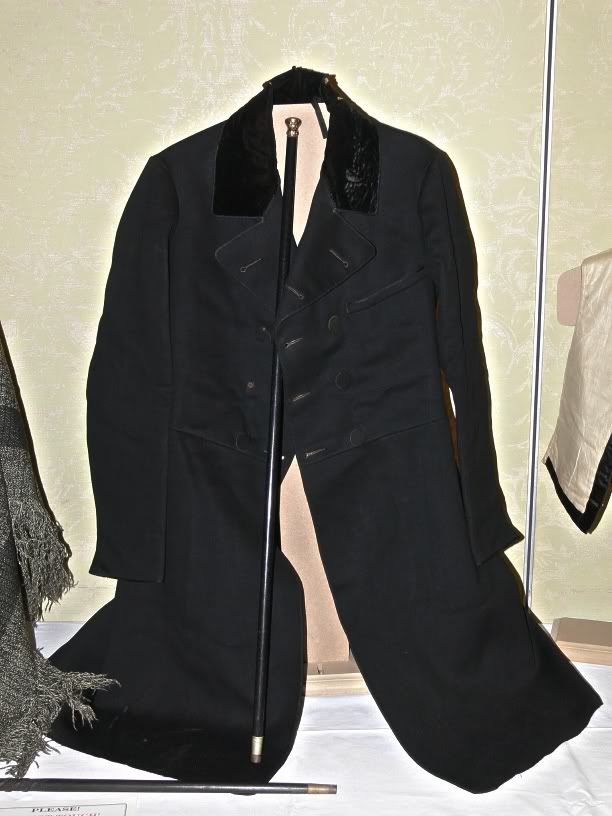
Closeup of the collar area, showing left breast pocket, separately cut lapels, cloth covered buttons and keyhole style buttonholes:
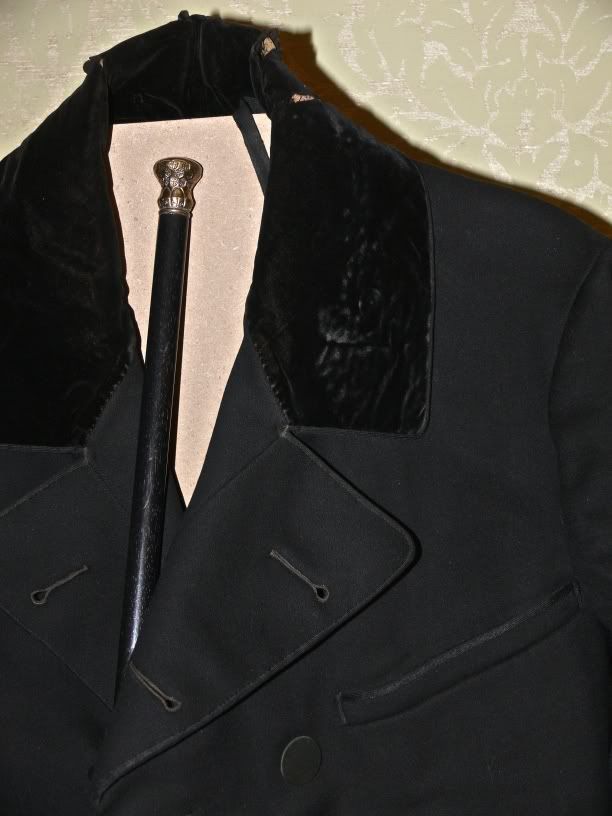
Back of the collar and lapel area showing visible padding stitching. Also notice the small bone button, one of three that probably once attached a missing cape. Another clue.
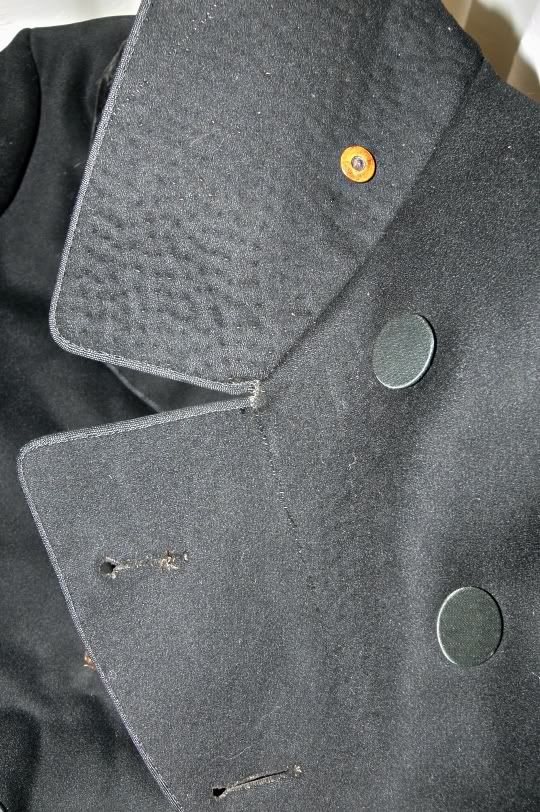
The cuff is non-functional but decorated with edge binding and a strip of flat lace. According to the collector, the black sleeve lining is also a clue that this is an overcoat. Regular frocks of the period typically have off-white sleeve lining, which became striped later in the century.
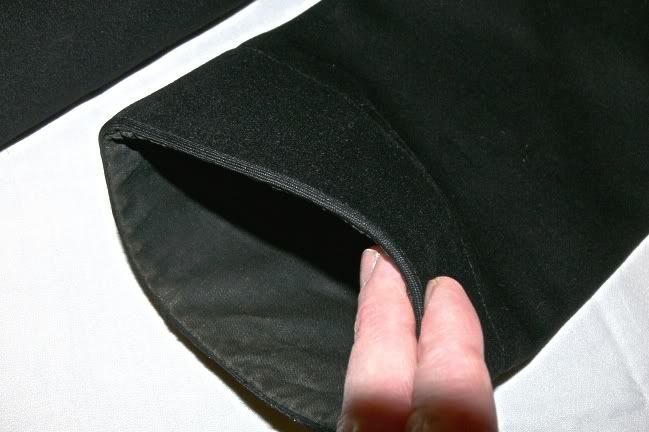
Tailors here will appreciate this curiousity. Most frocks have two-piece backs, narrowing at the waist and continuing to the hem as foundation for the back pleats and tails. This coat has a one-piece back, with a tail which is joined to the left-hand skirt.
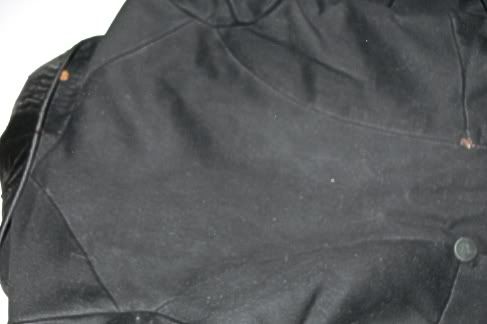
Closeup of the skirt area, showing a separate tailpiece attached to the right skirt, and the usual skirt pleat pocket. Even on black coats, these are usually brown.

Here's the quilted lining of the back, again showing the one-piece construction.

Enjoy,
Jim Ruley
Here is an overview of the coat. It's quite an elegant garment with a velveteen collar and edge binding. Unlike the regular frocks displayed , it is hemmed all round. The extra-long tails are one clue that this is an overcoat.

Closeup of the collar area, showing left breast pocket, separately cut lapels, cloth covered buttons and keyhole style buttonholes:

Back of the collar and lapel area showing visible padding stitching. Also notice the small bone button, one of three that probably once attached a missing cape. Another clue.

The cuff is non-functional but decorated with edge binding and a strip of flat lace. According to the collector, the black sleeve lining is also a clue that this is an overcoat. Regular frocks of the period typically have off-white sleeve lining, which became striped later in the century.

Tailors here will appreciate this curiousity. Most frocks have two-piece backs, narrowing at the waist and continuing to the hem as foundation for the back pleats and tails. This coat has a one-piece back, with a tail which is joined to the left-hand skirt.

Closeup of the skirt area, showing a separate tailpiece attached to the right skirt, and the usual skirt pleat pocket. Even on black coats, these are usually brown.

Here's the quilted lining of the back, again showing the one-piece construction.

Enjoy,
Jim Ruley



